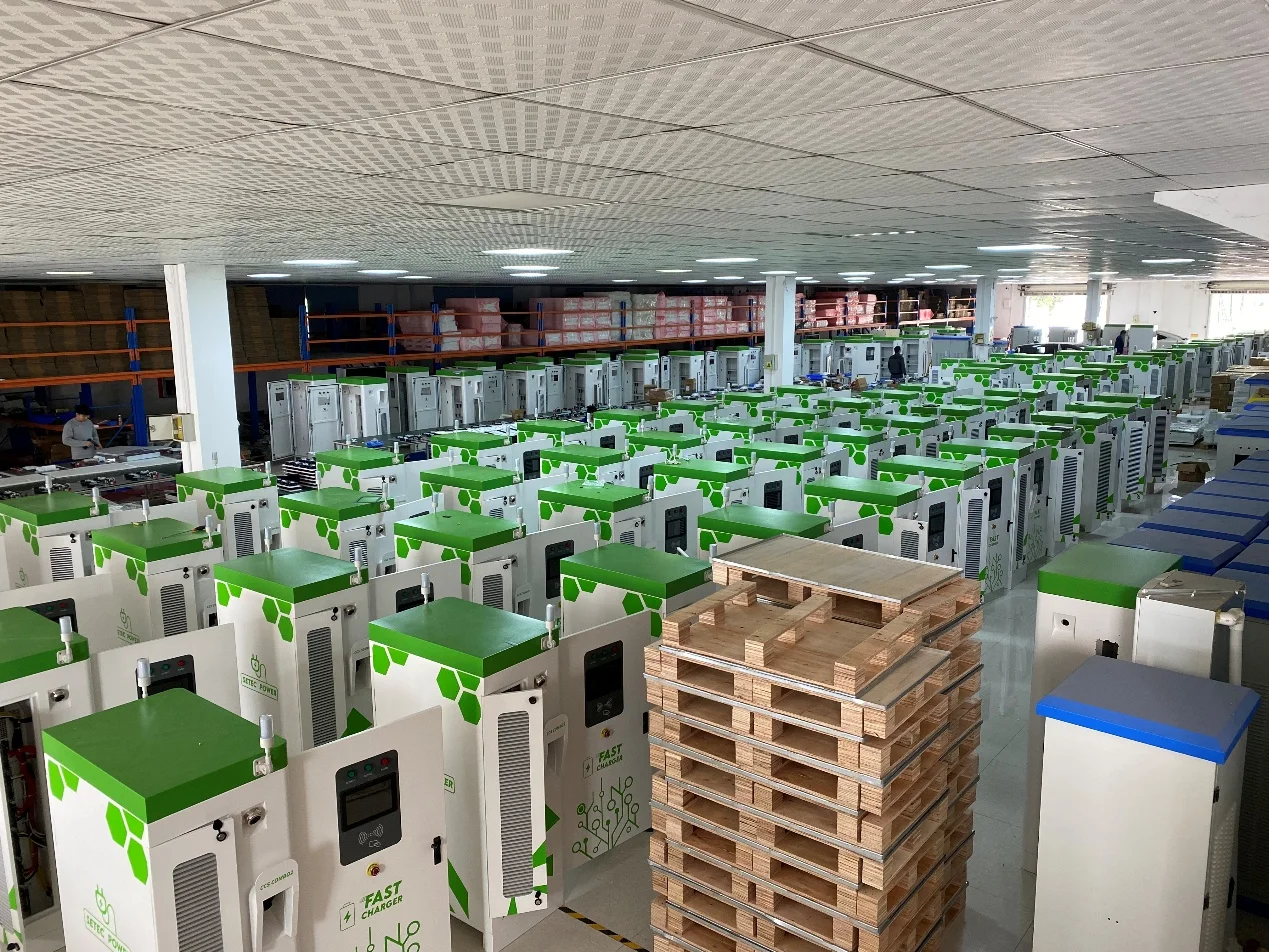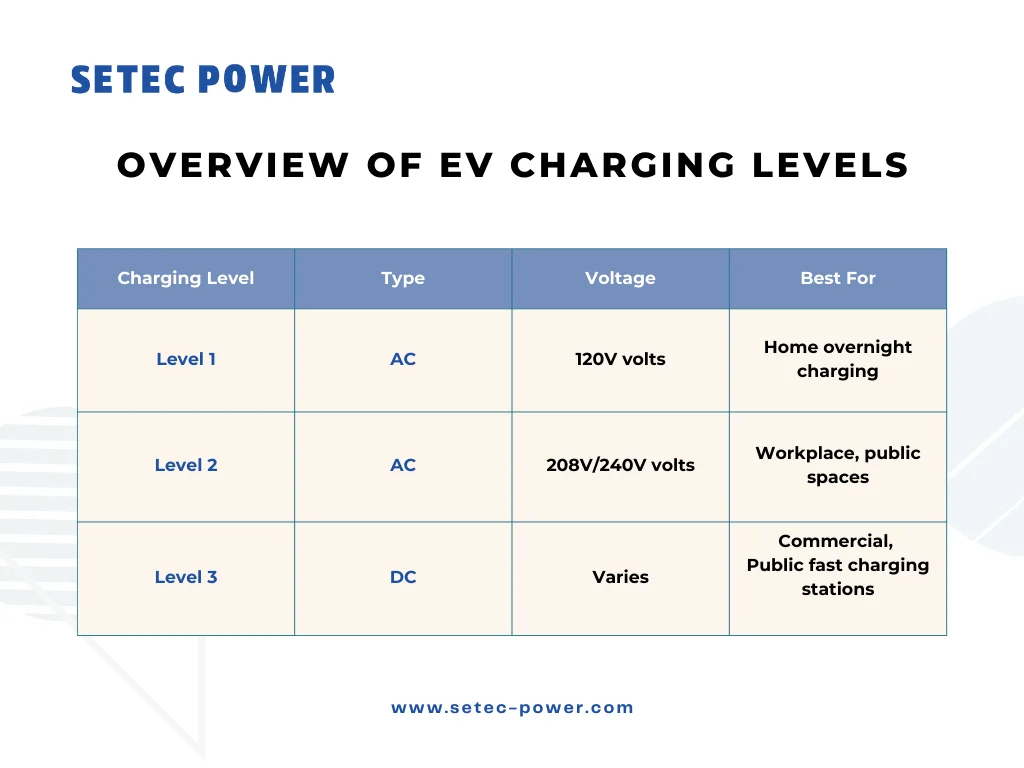Jan 02, 2025
Key Takeaways: EVSE vs EVCS at a Glance
Feature | EVSE | EVCS |
Definition | Electric Vehicle Supply Equipment - The charging hardware | Electric Vehicle Charging System - Complete charging infrastructure |
Components | Connectors, cables, control systems | EVSE + power management, payment systems, network infrastructure |
Primary Function | Delivers power to vehicle | Manages entire charging process |
EVSE and EVCS: Basic Definitions and Differences
Are you confused about the difference between EVSE and EVCS? Let's break it down in simple terms. Electric Vehicle Supply Equipment (EVSE) is like the gas pump at a station - it's the actual equipment that delivers power to your electric vehicle. Meanwhile, Electric Vehicle Charging System (EVCS) is the entire gas station - including the pump, payment system, and underlying infrastructure.
As stated by SETEC POWER’s Engineering Team, "Understanding the distinction between EVSE and EVCS is crucial for anyone involved in EV charging infrastructure planning or usage."

Understanding EV Supply Equipment (EVSE)
EVSE consists of several crucial components that work together to safely charge your electric vehicle. Here's what you need to know:
Charging Connector: connects the EVSE to the vehicle.
Control Box: manages power delivery and safety protocols.
Cables: carries electricity from the power source to your vehicle.
Safety Features: including ground fault protection and emergency shutoff,over current protection, over voltage protection, and temperature monitoring.

Complete EV Charging Systems (EVCS) Explained
A complete EVCS goes beyond basic charging equipment. As expertly detailed in our latest research on charging systems, EVCS includes:
Power Management Systems
Payment Processing
Network Connectivity
User Interface Systems
Types of EV Charging Stations

Safety Standards and Regulations
Safety is paramount in EV charging infrastructure. Key standards include:
SAE J1772 - North American electric vehicle charging connector standard, which specifies the physical specifications, communication protocols and safety requirements of the charging interface.
UL 2202 - Safety certification standard for electric vehicle charging system equipment, including electrical safety, environmental adaptability and other requirements.
NEMA standard - Industry guidelines developed by the North American Electrical Manufacturers Association, which regulates the protection level of charging equipment, etc.
Market Trends and Statistics
The electric vehicle charging infrastructure market is experiencing remarkable growth. According to recent market analysis, the global electric vehicle market is projected to grow significantly, with an expected CAGR of over 20% from 2023 to 2030. This impressive growth rate reflects the increasing adoption of electric vehicles worldwide.
Key Market Statistics:
Public Charging Infrastructure: There are approximately 1.8 million public charging points worldwide.
Growth Rate::A compound annual growth rate exceeding 20% is expected through 2030.
Market Drivers:
Increasing EV adoption rates
Government incentives and regulations
Growing environmental awareness
Adoption Rates and Infrastructure Development
The rapid expansion of charging infrastructure directly correlates with rising EV adoption rates. Key trends in this sector include:
Infrastructure Growth: Public charging networks are expanding at unprecedented rates to meet growing demand.
Regional Distribution: Major metropolitan areas are at the forefront of charging station deployment.
Investment Trends: Significant private and public sector investments are driving infrastructure expansion.
“According to SETEC POWER Market Analysis, 'The growing demand for EV charging infrastructure reflects a fundamental shift in transportation preferences and environmental consciousness.”
Practical Applications and Benefits
Modern EV charging solutions offer numerous benefits, including: SETEC POWER provide numerous benefits:
Reduced carbon footprint
Lower operating costs
Convenient charging options
Smart charging capabilities
Frequently Asked Questions
Q:What's the main difference between EVSE and EVCS?
A:EVSE is the charging equipment itself, while EVCS is the complete charging infrastructure system.
Q: Can I charge my Tesla at a non-Tesla charging station?
A:Yes, with an adapter. Tesla use a proprietary connector (North America Charging Standard - NACS in North America), SETEC POWER's charging stations including DC chargers and PowerOnTheGo already support NACS connectors.
Q:Are EV charging stations safe to use in rain?
A:Yes, EV charging stations are designed with safety features for weather conditions.
Conclusion and Next Steps
Understanding EVSE and EVCS is crucial for anyone involved in the electric vehicle ecosystem. Whether you're a fleet manager, property owner, or EV enthusiast, having the right charging infrastructure is essential for success.
Ready to Upgrade Your EV Charging Infrastructure?
For more information on EV charging solutions, please consult our experts. Our professional consultants will recommend the most suitable solution based on your needs.
Additional Resources